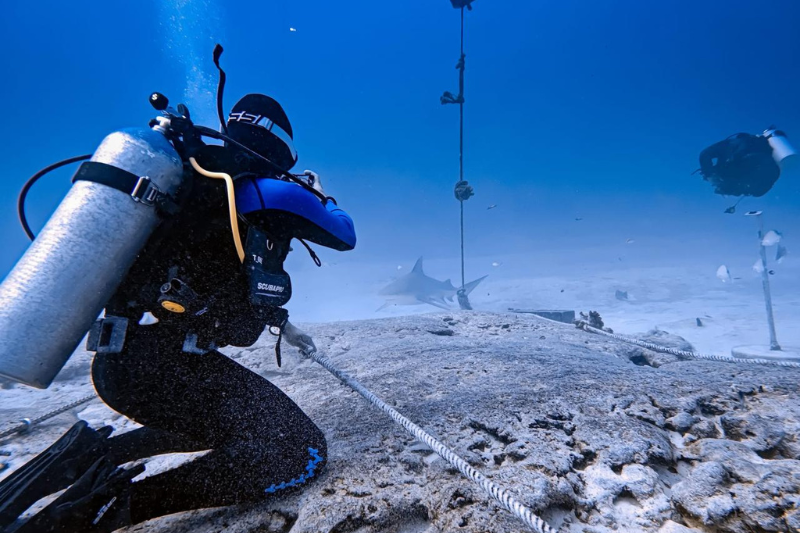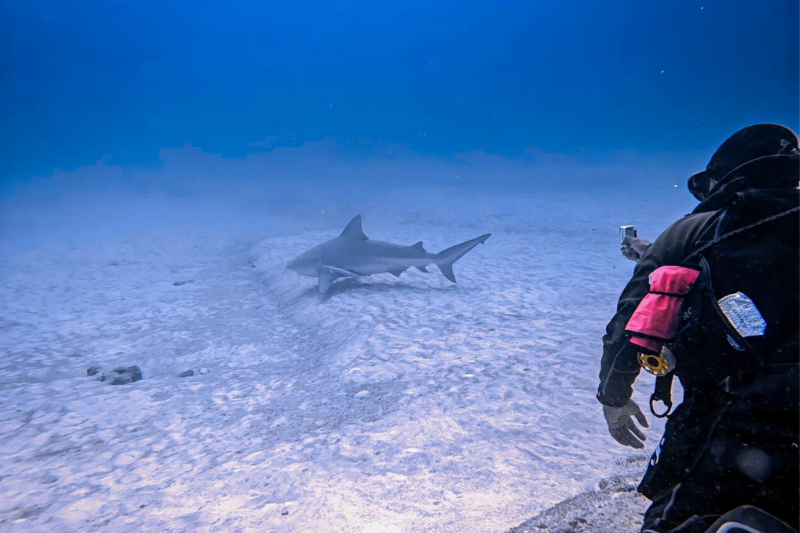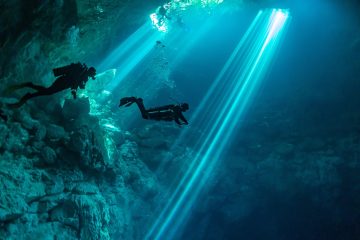Bull Sharks in Playa del Carmen: When and Why They Arrive
From November to March, Playa del Carmen becomes one of the best places for bull shark diving. During these months, pregnant bull sharks migrate to the shallow coastal waters as part of their annual reproductive cycle. They seek mangroves and estuaries to give birth, where their pups are protected from larger predators. These waters also provide abundant food, including fish, turtles, and the Castilla jack (Seriola dumerili). The slightly cooler winter water temperature makes Playa del Carmen an ideal temporary refuge for these incredible sharks.

Types of Bull Shark Dives in Playa del Carmen
Divers can experience bull sharks in two ways: observation dives and attraction dives.
Observation dives are the most sustainable and responsible. Divers sit on the seafloor, often at Shark Point, and let the sharks approach naturally. No baiting or feeding is involved, which ensures sharks maintain their normal behavior.
Attraction dives use small amounts of fish to lure sharks closer, creating more intense encounters. While still offered by some operators, this method is becoming less common due to its impact on shark behavior and the potential risk of aggression. Responsible dive operators now focus on observation dives to provide safe and ethical experiences.

Safety Guidelines for Bull Shark Diving
Safety is a top priority during Playa del Carmen shark dives. Divers are guided in small groups, instructed on keeping a safe distance, avoiding sudden movements, and never touching or feeding the sharks. Maintaining calm, staying together, and controlling buoyancy helps prevent environmental disturbance. Dark wetsuits and minimal shiny accessories reduce unnecessary attention from the sharks. Following these practices, there are no recorded bull shark attacks on divers in the area.

Why Bull Sharks Matter for Marine Ecosystems
Bull sharks play a vital ecological role. As apex predators, they help regulate fish populations, remove weak or sick individuals, and maintain healthy genetic diversity. They protect habitats like seagrass beds and coral reefs by controlling herbivore populations, preventing overgrazing and excessive algae growth. Additionally, their movements redistribute nutrients and support the ocean’s natural balance. Without bull sharks, the Caribbean’s marine ecosystems could face serious consequences.

Photo: King Riviera Experience
Bull Shark Life Cycle and Behavior
Female bull sharks that arrive in Playa del Carmen travel from across the Caribbean and Gulf of Mexico as part of their reproductive cycle. Gestation lasts 10–11 months, and pups are born live—between one and thirteen per litter—in shallow waters, safe from predators. Bull sharks are opportunistic apex predators, feeding on fish, rays, crustaceans, mollusks, and occasionally marine and terrestrial mammals. While potentially dangerous, they do not target humans, and responsible bull shark dives are safe for divers.
Dive Responsibly, Explore, and Learn
Bull shark diving in Playa del Carmen offers both adventure and education. By following safety guidelines and responsible operator protocols, divers can witness these apex predators up close while supporting marine conservation. This experience combines excitement, learning, and a commitment to protecting ocean ecosystems, leaving unforgettable memories.
Book Your Bull Shark Dive in Playa del Carmen Today
Experience the thrill of diving with bull sharks in their natural habitat. Secure your spot now and make this seasonal adventure an unforgettable part of your Playa del Carmen visit! Book here!

Photo: King Riviera Experience






0 Comments